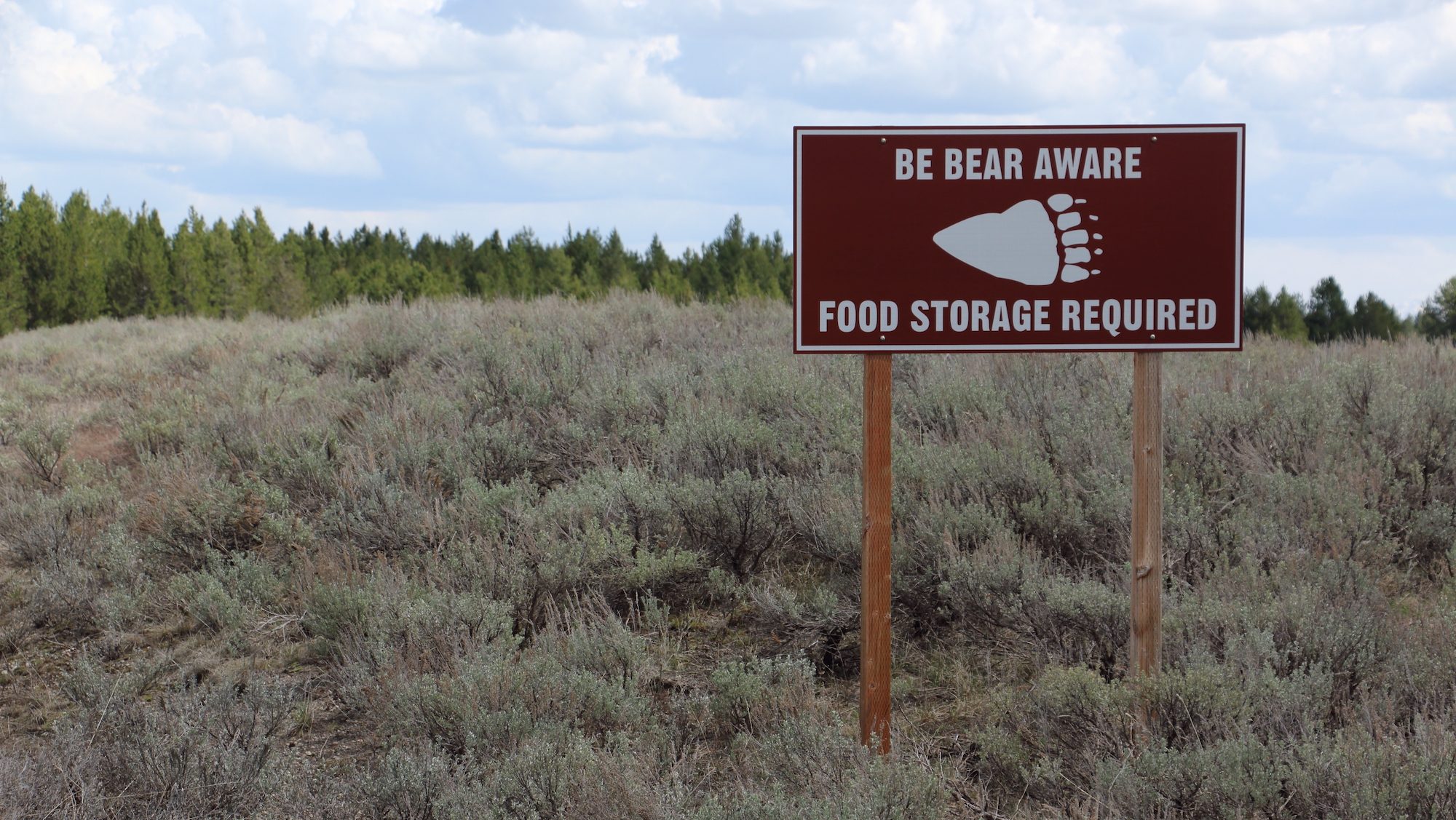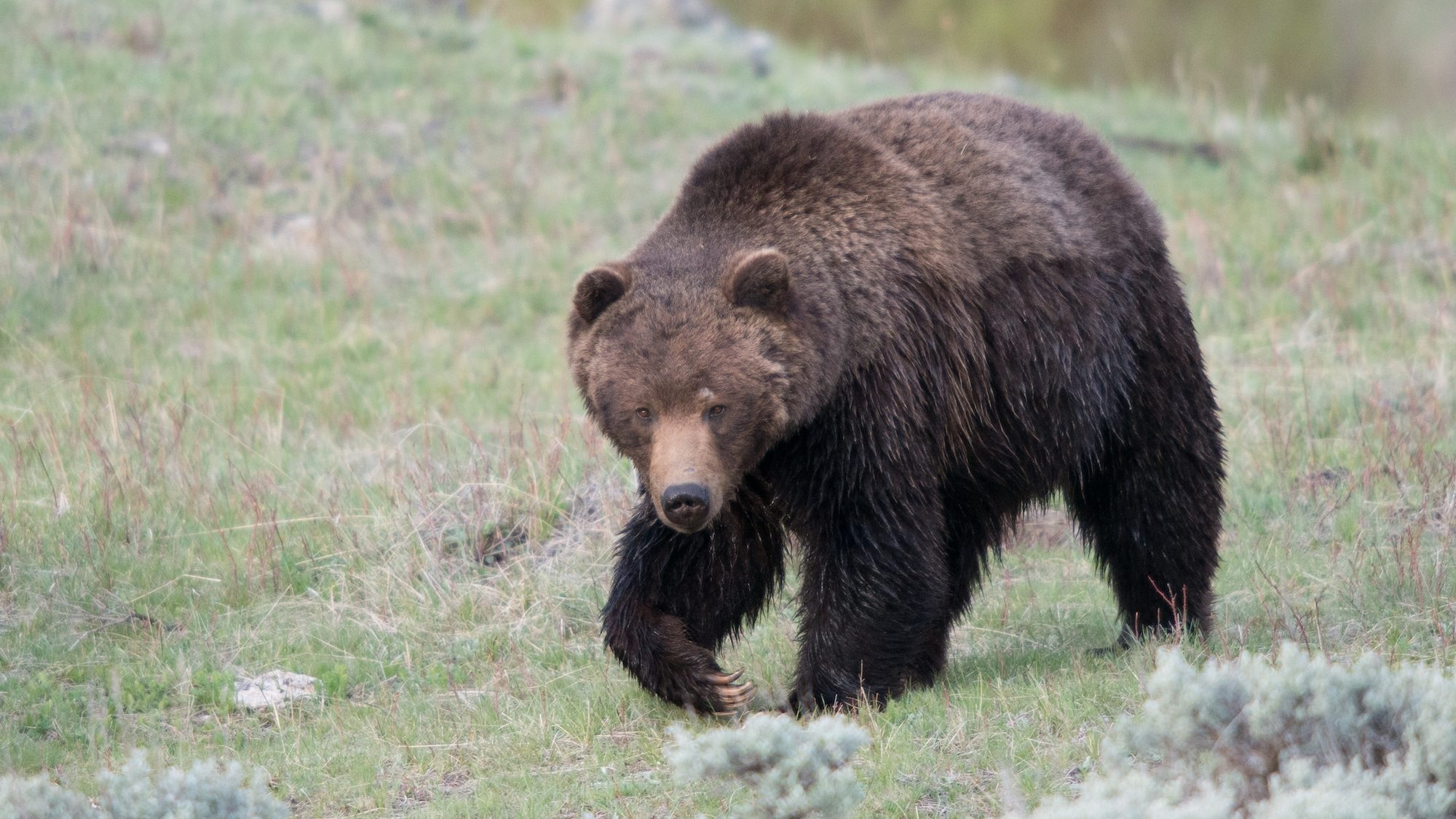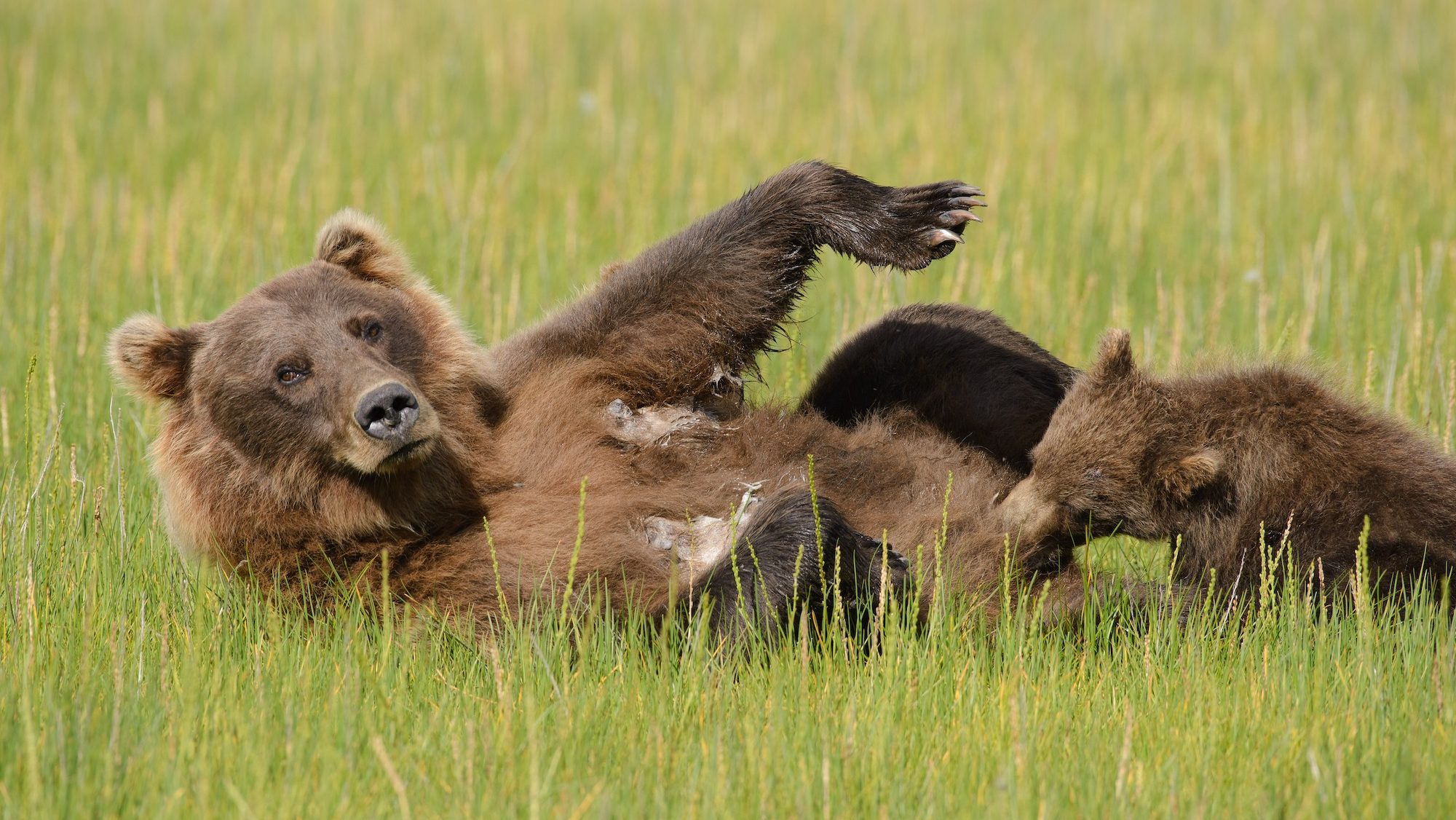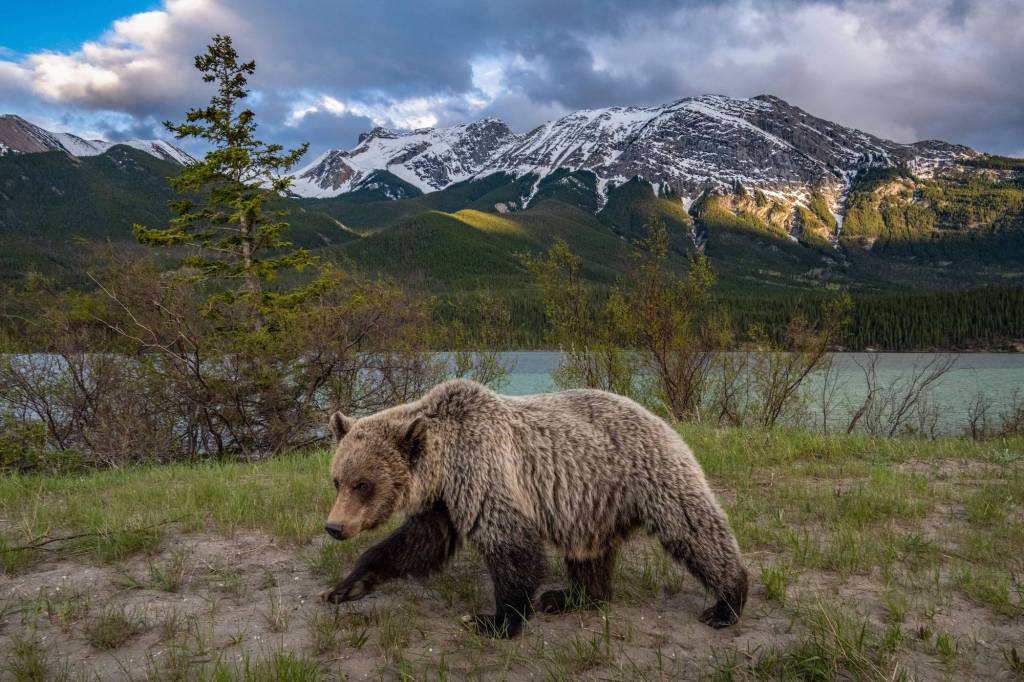I’m nose to nose with a grizzly. He smells like forest. I smell like fear. He’s snoring. I’m holding my breath. The main reason I will survive this wild encounter is because the 400-pound-predator is on drugs. There’s a needle in his right shoulder that delivers a sleepy-time sedative for 45 minutes.
That’s just enough time for me to collect footage while wildlife biologists collect DNA samples and put a GPS collar around his neck. That collar is bigger than the belt around my waist and it will tell researchers where the bear goes when he wakes up. He’ll be followed closely because grizzlies in the Greater Yellowstone Ecosystem (GYE) are federally protected by the Endangered Species Act.
The Greater Yellowstone grizzly bear population has increased from less than 200 in the 1980s to more than 1,000 today. Human population in the same area over the same amount of time has more than doubled from 218,000 to 506,000. Despite the growth of both species, the odds of crossing paths with a bear are still slim.
But the odds are going up as grizzlies spread out.
“The fact that we have hundreds of grizzly bears roaming this landscape and at the same time we have all these people, and they’re still thriving?” says Thomas Baumeister, Access WILD llama outfitter. “They’re not just surviving. They’re thriving. That’s a remarkable thing.”
Here’s how to stay safe in bear country as the wild tries to make its way with us in the way.

Store
When you watch location points transmitted by a moving GPS collar populate a map on a screen, you see pock marks swell all over the place like a severe case of hives.
Grizzlies go wherever there is something to eat so their path is erratic. One bear can easily cover more than 1,000 miles in one summer. He’s here for winterkill, there for fish, clear over here for elk calves, way up there for moths and then back here for berries.
Bears have plenty of high quality forage in the high country, so avoid causing them to detour to the low lands for our stuff. Store food and garbage in bear-resistant bins. Better yet, store everything that smells. That includes gas cans, toothpaste and that greasy grill you charred cheeseburgers on.
“We are surrounded by millions of acres of public land where bears can find food,” says Kirstin Combs, Wyoming Wildlife Advocates executive director. “They don’t need to come in to town to do so.”
Towns in the GYE are starting to require bear-resistant bins and every campground in the GYE managed by the U.S. Forest Service now has bear-resistant bins for food storage and for garbage. Fill those up instead of a bear’s belly.

Spray
Carry bear spray in the bear country, including in popular protected areas like Yellowstone National Park and Grand Teton National Park (as well as areas bordering both parks). Canisters of eye-stinging red pepper carry well in hip holsters for quick draw, but in dense canopy do more than that. Have it in your hand. Make sure your buddy carries a can too, since it’s safer to recreate with others rather than going solo in bear country. And speak up. Spray your voice through the trees like your volume knob is on high. Holler ‘hey bear’, sing and whistle as you wander. Bears will hear you coming, but you probably won’t see them leaving and that’s a good thing.
“It’s not just a conservation issue. It’s a human safety issue,” says Kathy Rinaldi, Greater Yellowstone Coalition deputy conservation director. “They are the top predator and if you surprise them, they are not too happy about that.”

Seal
Look for a certified seal on your camp cooler. It’s usually under the lid in a corner. That seal means a grizzly living in captivity tested it and couldn’t get into it so it passed. The bin earned bear-resistant certification. Good to know, but that seal is as useful as a sticker if the cooler is not locked.
“A lot of people don’t understand that a cooler in order for it to be bear resistant has to have either padlocks on it or a bolt and a nut method in the holes that are provided on the cooler,” says Randy Gravatt, Grizzly and Wolf Discovery Center container testing coordinator. “They see the rubber latches and think that’s going to keep a bear out. A bear would rip those rubber latches off in seconds.”
Most new coolers come with pre-drilled holes for locks, but they don’t come with actual locks. Buy those separately and use them diligently.

Stay
When animals are close to roadways, they stop traffic and “bear jams” are the biggest traffic stoppers. Hundreds of people swarm a bear jam spot in seconds, especially if it’s photo-famous Grizz No. 399.
She’s so popular because she raises her cubs near roads in Grand Teton National Park. She’s the reason the National Park Service started the Wildlife Brigade in 2007. The brigade is a few dozen staff and volunteers who reign in the chaos of a crowd at a jam and they are plenty busy. Grizzly bear jams in the park have increased from 122 in 2014 to 210 in 2022.
“We really want people to see bears here in Grand Teton,” says Justin Schwabedissen, Grand Teton National Park bear biologist. “We just want to be able to make sure that’s done safely for both bears and people.”
You will see long lens users at bear jams. You will see cell phone users too. A long lens photographer can stay away while zooming in for tight shot. A cell phone user has to move in for a tight shot. Many of them choose to close the distance instead of staying away. That’s a problem. Resist the urge to move in, especially when a sow grizz with cubs is involved. That won’t end well for you or the bears.




Join the Discussion